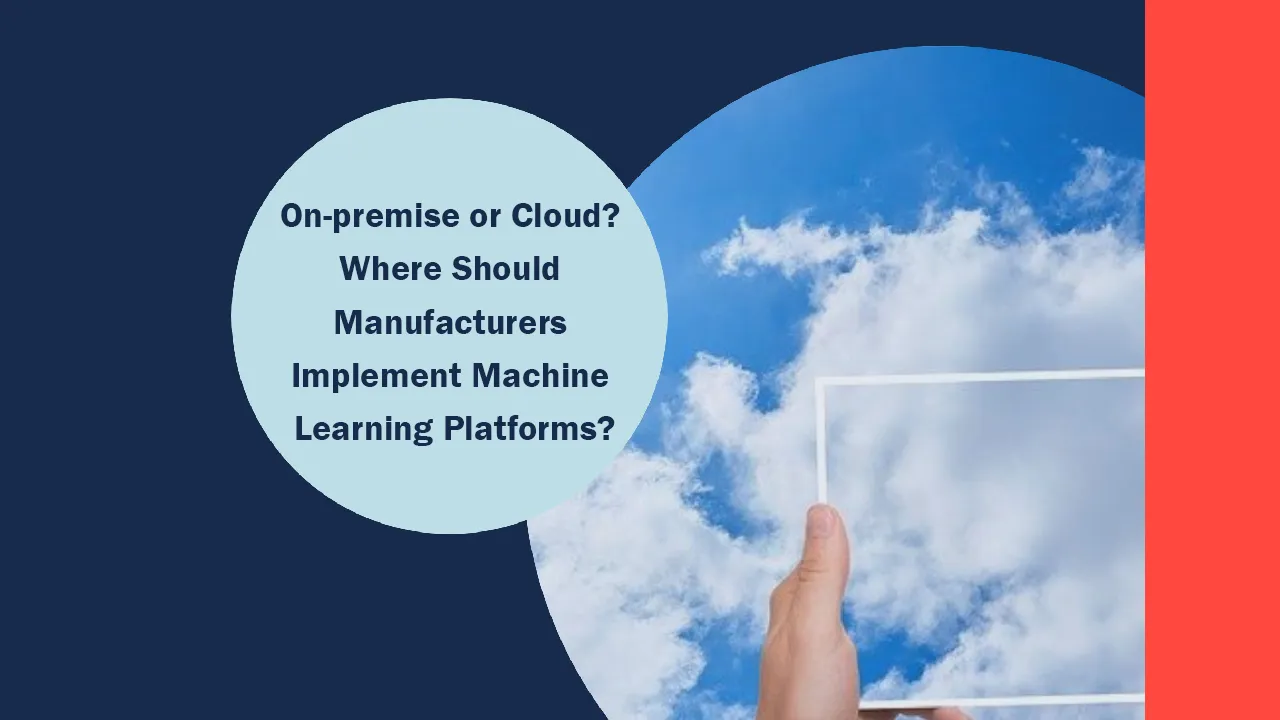A customer contacted me recently regarding the machine learning platform. As a manager, he manages not only the operation and maintenance of the platform but also compliance and user requests. Sometimes, it can be challenging to fulfill the expectation of different stakeholders. Moreover, there’s a remarkable trend for businesses turning to the cloud. “Is there any best practice for enterprise to choose between on-premise or cloud? “ he said.
In this article, we will cover the following topics
- What is Machine Learning
- What’s the benefit of implementing Machine Learning?
- What are the scenarios in manufacturing?
- Comparison between on-premises and cloud from financial perspective
- Comparison between on-premises and cloud from application perspective
- Summary
What is Machine Learning?
Machine Learning is part of artificial intelligence. It is the study of computer algorithms which can make prediction and decisions based on amount of sample data. The algorithm evolves as the amount of data grows. For example, social media such as Instagram predicts our preference based on our views and likes, even put tags on our profile. As time goes by, Instagram will have a more comprehensive tagging and customer profile, which leads to a more precise prediction.
What’s the benefit of implementing Machine Learning platform?
As with most of the technologies, ML helps us to create more value in two ways. First is increasing revenue through increasing capacity, creating new services or products, and enhancing customer engagement. Another angle will be decreasing cost through streamlining the business process and improving efficiency.
Let’s see what are the scenarios that Machine Learning can help manufactures.
What are the scenarios in manufacturing?
Manufacturing process can be very complex throughout the raw materials to final products. In general, there are big phases including raw material extraction, manufacturing production, transportation, disposal recycling. If we take a closer look into manufacturing production, it contains product design, scheduling, manufacturing itself, and supply chain management. In this article, we will focus on how to use machine learning to reduce error and increase capacity. If you are interested in learning more about different scenarios, feel free to check here.
Comparison between on-premises and cloud from financial perspective
The most important factor for enterprises when evaluating whether turning to cloud is probably the finance aspect. There are different top of mind for rapidly growing company, mature company, and conservative company:
Rapid growing company focuses on revenue growth
Rapid growing company focuses on how to acquire more customers. Many companies would gain more resources, including talent and capital, to achieve their goal through fundraising. For example, Shopify needs to expand its global footprints for acquiring more customers. Also, spending on R&D for new features to differentiate themselves among competitors. All these need resources. The investor would evaluate the company to decide how much they should invest. For the company at this stage, it is more important to focus on business development rather than worry about IT infrastructure planning in a global scale. Cloud service providers are good partners to team up with as they have data center coverage globally.
Mature company wants to keep margin
Mature company has a rather stable business model. The top of mind of the C suite would be maintaining the margin. Let’s take Foxconn as an example, when the sales of its electrical components have been stable, the next question would be: how to keep the cost low? One of the nature of cloud computing is flexible cost structure, which would help companies lower the cost while the sales decrease, so to keep the margin.
Conservative company optimizes free cash flow
Rick management would be crucial for conservative companies, especially during the special situation. The company prefers to have enough free cash flow for uncertainty so that it can keep operating in the market. For example, many companies are affected during the pandemic. They can’t keep business running due to the lockdown. If they don’t have enough cash to pay the bill, such as salaries or rent, it would be an alert. Cloud computing turns CAPEX into operating cost to avoid upfront cost and keep cash on hand.
Comparison between on-premises and cloud from other perspectives
There are other benefits when considering turn to the cloud:
Flexibility
In the past, IT expense was considered as CAPEX, which are funds used by a company to acquire, upgrade, and maintain physical assets such as technology or equipment. The company needed to plan ahead for forthcoming demand, such as storage and computing power, from the business side. The consequence of this approach was the waste of idle machines and budget. Take World Cup as an example, Broadcasters would invest hugely to fulfill streaming demands globally when the game took place. However, the resources became obsolete after the season. If the broadcaster leverages cloud computing, the budget allocates more efficiently as the machine can switch on and off on an hourly basis. The broadcaster won’t need to pay when the machine is not in use. This strategy also applies to shopping festivals for e-commerce or surge demand for manufacturers.
Time to market
TTM, or Time to market, are synonyms describing the period of time it takes from initial idea to finished product. When expanding business overseas, companies demand the fast provisioning of applications to speed up time to market by leveraging the global footprints of cloud service providers, saving time on purchasing property, equipment, and construction.
#data-warehouse #azure #machine-learning
